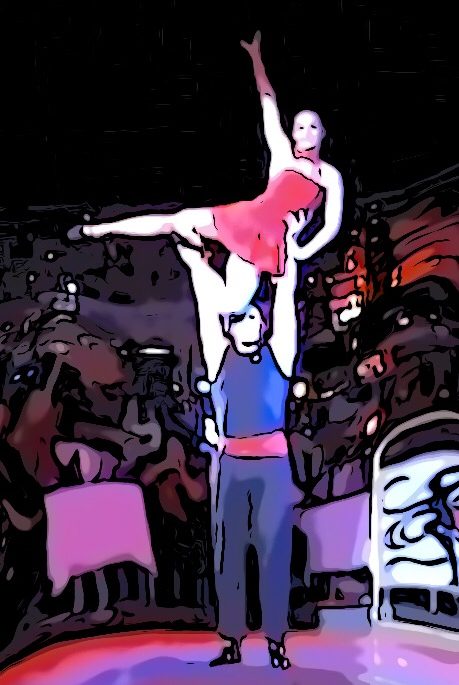The Ocho (→ 8) results from the correctly danced forward or backward step → the caminata. As a reminder, there are 2 knee-to-knee positions directly behind each other in both forward and backward motion. These short moments are not held and should not produce an extension of the knees. The heel of the standing leg remains on the ground.

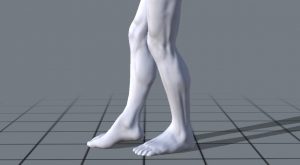
In order to allow the free leg to swing through under the center of gravity, while keeping the knees close to each other, a small pivot on the footpad of the standing leg is required. The torso turns in advance and pulls the leg behind him. This Pivot creates an S-curve in the further course of motion, which already equals half an 8. Although not a whole 8 is danced with this sequence of movements, it got the name: Ocho. After all, the free leg paints an 8, but it often does … Probably the name Arco (→ bow) would have been more senseful.
An Ocho is mostly only recognized as such when the pivot is danced with a rotation of 90 degrees or more. However, there is no fixed angle of rotation for the pivot within the Ocho. The new footstep “only” crosses the previous direction of movement. Not to cross is similar to skating in cross-country skiing. There are many examples of Tanguer@s doing skating, but I miss the grace of a cat … An open position in the legs with bent and turned outwards knees should always to be avoided in my opinion. There are very few Tanguer@s that look good with this.
Incidentally, a model also trains this movement for taking the catwalk. When a model without pivoting crosses the legs, she looks more like a stork. The Latin American dancers will recognize this movement again in the opening out of the Rumba for the lady. In Tango Argentino, however, the hip remains under the shoulder and the legs keep slightly bend.
Guiding:
The leading one waits with his motion impulse until the following one has reached the desired rotating extensive. He leads this rotation by positioning himself accordingly. Once he frees his space, the lady dances in this room. If he does not, the lady dances away from him without giving up the posture. If the lady takes the opportunity to turn away from the man with much energy, a shadow position arises, in which both dancers stand in the same direction. This greatly over-turned Ocho requires a dissociation (= inner body twisting of upper body to lower body) of the lady, for which she needs sufficient freedom of movement on the right side of the man. The arms of the “closed” side slide inwards and outwards to give the dissociation no resistance and to let it act effortlessly.
Example: Ocho forwards of the lady
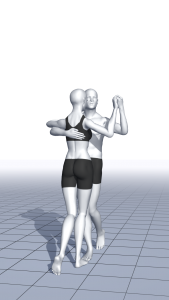
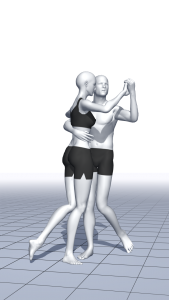
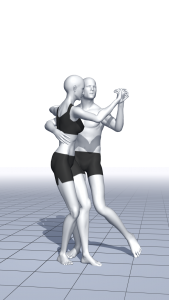


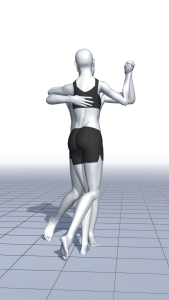
Picture 1) Starting position: Crossed system, i.e. everyone is standing on his right foot
Picture 2) the lady is dancing a pivot in her right foot – afterwards she starts a normal step forwards
Picture 3) the leading one generates an impulse from the supporting leg
Picture 4) The weight transfer is for the lady forwards and sideways for the gentleman
Picture 5) the step is completed – the lady ends in a strong dissociation
Picture 6) the dissociation is dissolved – the space for the next step will be created
Variants:
- If the free foot is kept crossed during the pivot, an Enrosque is created.
- If the leading one rotates back (rebound) the lady during the pivot, this creates a Boleo.
- A special case is the Ocho Cortado (→ cutted Ocho). Presumably, this figure got its name from the fact that the lady is prevented from executing the Ocho …
Deutsch
